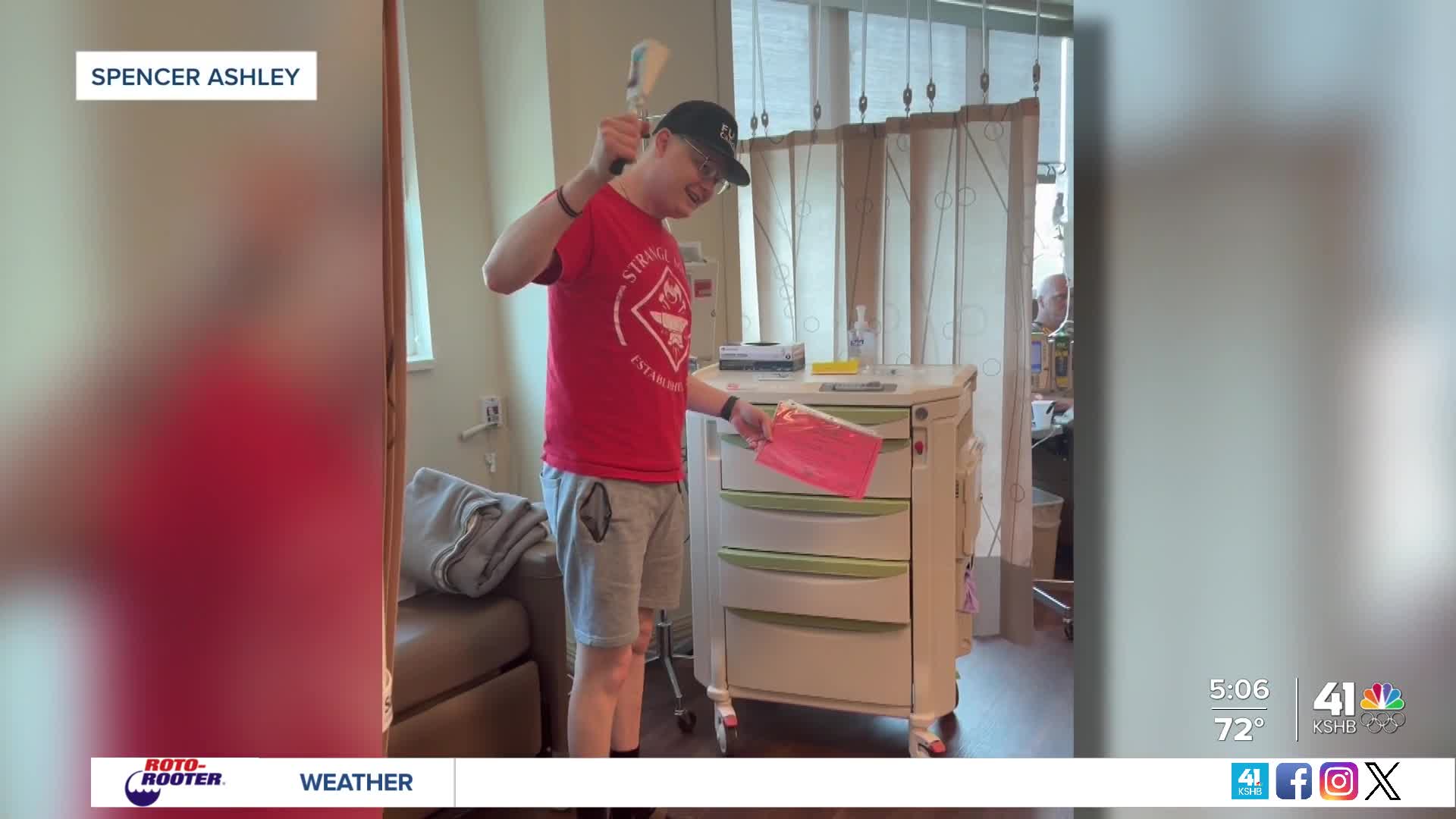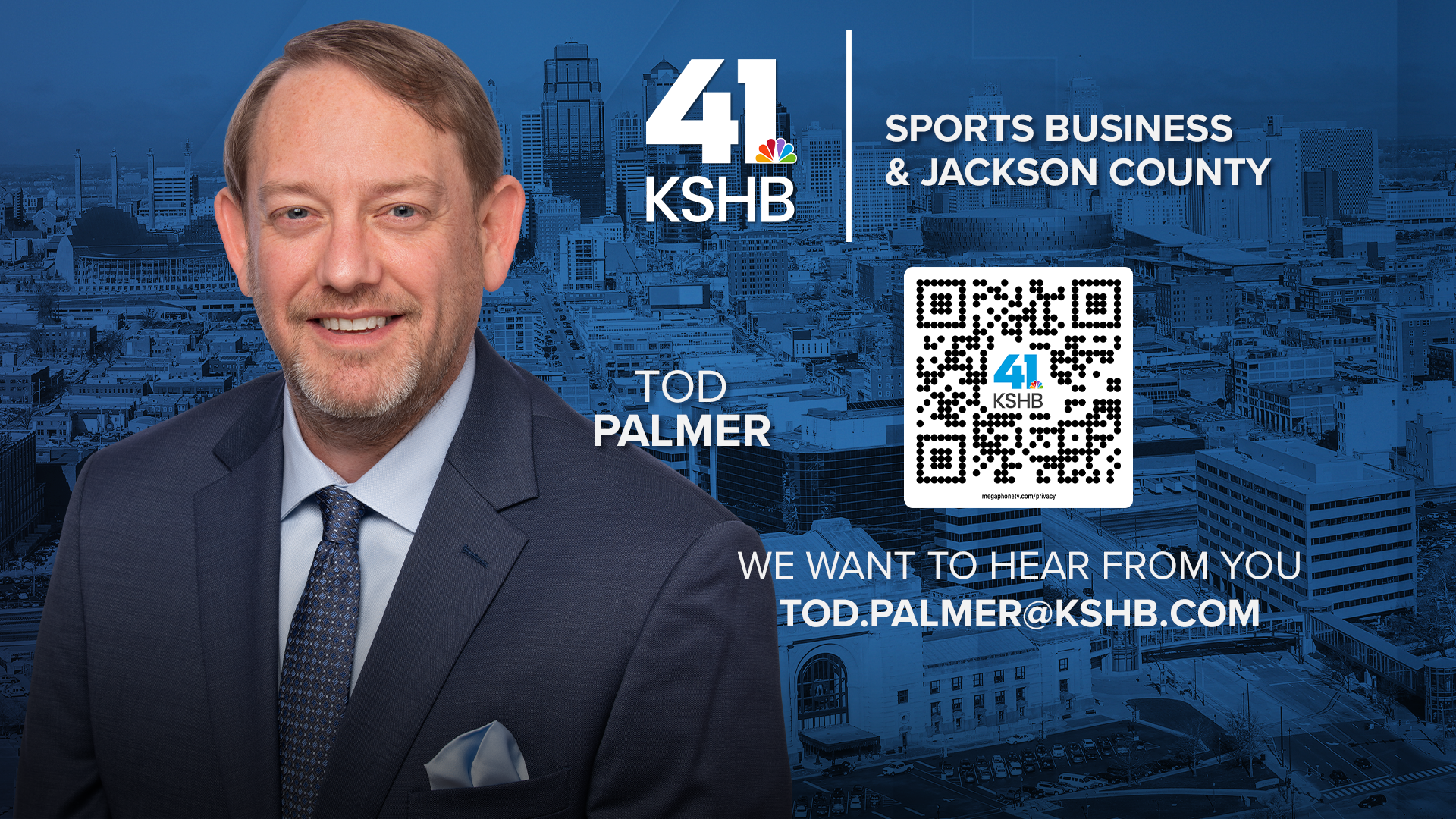KSHB 41 reporter Tod Palmer covers sports business and eastern Jackson County, including Independence. Share your story idea with Tod.
—
For three years now, the Independence Fire Department has partnered with Lifescan Wellness to provide annual physicals for all department members.
Firefighter Spencer Ashley said the scan he underwent last October saved his life.
“It was just another normal day,” Ashley said.
He was 24 years old in his second year as a firefighter with IFD — following in the footsteps of his father, Richard, who spent 35 years with the department.
“This was my second LifeScan,” Ashley said. “The first one, it was all clear. ... The second one is where everything changed.”
Lying on a non-descript table in a makeshift ultrasound screening room, the technician noticed that the lymph nodes in his neck were excessively enlarged — three times bigger than normal, Ashley recalled.
“The way that she responded to me, her reaction to it and sending me back to the nurse practitioner to go get looked at for the second time — that's when I was like, ‘OK, I'm gonna make an appointment with my primary care physician and get it looked at,’” Ashley said.
Tests confirmed the doctors’ fears.

“I was diagnosed with classic Hodgkin lymphoma with a syncytial variant subtype, which is a rare variant form of classic Hodgkin lymphoma,” Ashley said.
Studies show firefighters are at a higher risk of developing cancer than the average person and that cancer is the leading cause of firefighter deaths in the line of duty by a wide margin.
“Generally speaking, across the board, it's about one and a half times more likely depending on the cancers,” IFD Assistant Fire Chief Craig DuPlantis said. “It's 15 to 19 times more likely for certain cancers. ... It's going to happen. It is a part of the job. It's an inherent risk that's understood.”
After Ashley’s diagnosis, 12 rounds of chemotherapy infusions, each followed by a stomach injection the next day to keep up his white-blood cell count, lasting from Jan. 8 to June 27, 2025.
“Eating, going up and down stairs, everything was just exhausting,” Ashley said. “Not to mention the mental side that goes along with it — the depression, anxiety, PTSD, all of it.”
Still, it was better than the alternative.
“With the rare variant form of cancer that I had, my oncologist told me to my face that if you hadn't gone to your primary care physician to do this follow-up, you would have been dead in six months,” Ashley said.

IFD has worked with the firefighters union, IAFF Local 781, in recent years to make the annual physicals mandatory.
“We haven't gone through a single year where we haven't found at least one person with a problem,” DuPlantis said. “Not specific to say cancer like this, but we've caught health threats and life threats in multiple people every year we've done this.”
Initially, the firefighters union was concerned about how the information would be used, but DuPlantis said the reality of screenings in recent years helped create buy-in and allay those fears.
“The fact that all of the problems we've located have been with personnel in the operations division, rank-and-file personnel, goes a long way towards kind of spreading our message that this is for your benefit,” DuPlantis said.
Ashley is certainly grateful for the screenings — and hopes that other firefighters, or people in general, don’t put off recommended preventive screenings, like the one he credited with saving his life.
“I thank God we do this,” DuPlantis said. “I'm very happy that we were able to make this mandatory, because, if it were optional, a lot of younger personnel would go, ‘Well, I'm 25 years old, so I don't need to do this.’ We would have missed that, and we probably would have lost him, but I'm glad we didn't.”
—





